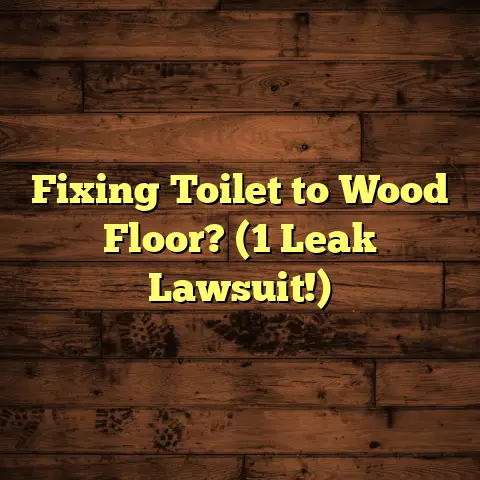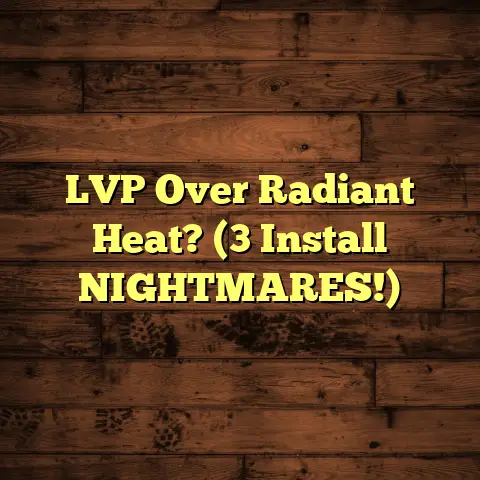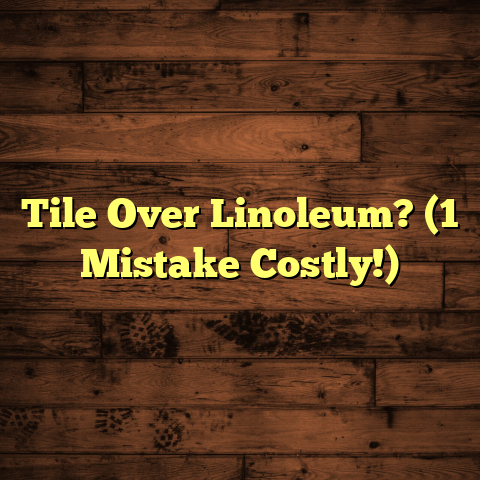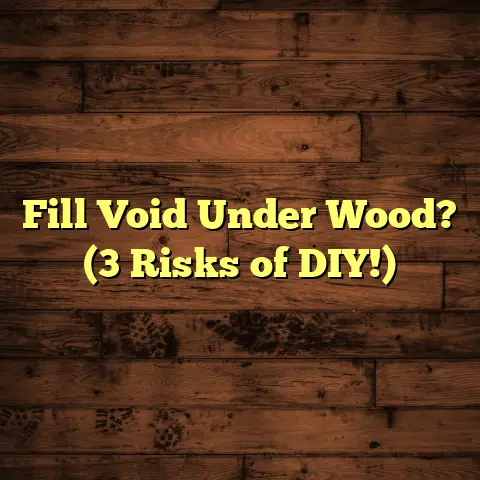Swiffer WetJet Safe on LVP Floors? (5 May Be No!)
It’s your friendly neighborhood flooring contractor here, ready to spill the tea on a topic I get asked about all the time: Swiffer WetJets and luxury vinyl plank (LVP) flooring.
LVP has taken the flooring world by
storm, and for good reason.
But are
those convenient Swiffer WetJets
really the best way to keep your
LVP looking its best?
Let’s dive deep and uncover the truth. Spoiler alert: you might be surprised!
Section 1: Understanding Luxury
Vinyl Plank Flooring
So, what exactly is LVP flooring, and why is everyone so obsessed with it?
Simply put, LVP is a multi-layered synthetic flooring product designed to mimic the look of real hardwood, stone, or tile.
Think of it as a high-tech, super-durable version of vinyl flooring.
Key Characteristics:
-
Multi-layered Construction: LVP typically consists of a wear layer (the top layer that protects against scratches and stains), a decorative layer (the printed design that gives it its realistic appearance), and a core layer (which provides stability and water resistance).
Water Resistance: This is a huge selling point.
LVP is far more water- resistant than hardwood, making it perfect for kitchens, bathrooms, and basements.-
Durability: LVP is designed to withstand heavy foot traffic, scratches, and dents.
-
Ease of Installation: Many LVP products are designed for DIY installation, with click-lock systems that make it a breeze to install.
-
Variety of Designs: You can find LVP that mimics just about any natural material, from oak and maple to slate and marble.
Composition of LVP:
The exact composition can vary depending on the manufacturer, but generally, LVP includes:
-
PVC (Polyvinyl Chloride): This is the main component, providing water resistance and durability.
-
Plasticizers: These add flexibility and impact resistance.
-
Stabilizers: These protect the PVC from degradation due to heat and UV light.
-
Pigments: These give the LVP its color and design.
LVP vs. Other Flooring Materials:
Benefits of LVP:
-
Water Resistance: As I mentioned, this is a game-changer.
-
Durability: Stands up to kids, pets, and everyday wear and tear.
-
Ease of Installation: Saves you money on professional installation.
-
Variety of Designs: Matches any decor style.
-
Comfort: Softer and warmer underfoot than tile or stone.
Why Proper Cleaning Matters:
Even though LVP is durable, it’s not
indestructible.
Proper cleaning and
maintenance are crucial for:
-
Preserving its Appearance: Regular cleaning prevents dirt and grime from dulling the surface.
-
Extending its Lifespan: Proper care prevents damage and wear.
-
Maintaining its Warranty: Many warranties require specific cleaning methods. (More on this later!)
So, you’ve invested in beautiful LVP
floors.
Now, how do you keep them
looking their best?
That’s where the Swiffer WetJet comes in. Or does it?
Section 2: The Swiffer WetJet –
Convenience at a Cost
The Swiffer WetJet.
We’ve all seen the
commercials.
It promises quick, easy,
and effective cleaning with minimal
effort.
But what’s the real story?
The Swiffer WetJet is a spray mop system that dispenses a cleaning solution onto the floor while you mop.
How It Works:
-
Attach a Cleaning Pad: The WetJet uses disposable cleaning pads that attach to the mop head.
-
Insert Cleaning Solution: You insert a bottle of cleaning solution into the mop.
-
Spray and Mop: Press a button to spray the cleaning solution onto the floor, and then mop as usual.
Appeal of the Swiffer WetJet:
Ease of Use: It’s incredibly simple to use.
Just attach the pad, insert the solution, and go.-
Convenience: No need for buckets of water or wringing out mops.
-
Effectiveness on Various Surfaces: Marketed as safe for most hard floors.
User Testimonials:
I’ve heard it all from homeowners.
Some rave about the Swiffer WetJet, saying it’s a lifesaver for quick cleanups.
Others have had less positive experiences, reporting streaky floors, residue buildup, and even damage to their flooring.
Here’s a typical example:
“I loved my Swiffer WetJet at first, but
after a few months, I noticed my LVP
floors started looking dull and streaky.
I switched to a different cleaning method,
and the difference was night and day!”
– Sarah M., Homeowner
So, while the Swiffer WetJet offers convenience, it’s essential to consider its potential downsides, especially when it comes to LVP flooring.
Section 3: Reason 1 – The Risk of
Warping and Damage
Okay, let’s get down to brass tacks.
One of the biggest concerns with using
a Swiffer WetJet on LVP is the risk of
warping and damage caused by excessive
moisture.
LVP is water-resistant, not waterproof.
While it can handle spills and splashes, prolonged exposure to moisture can seep into the seams and edges, leading to warping, swelling, and even mold growth.
How Excessive Moisture Harms LVP:
-
Seepage: Water can penetrate the seams between planks, especially if the installation wasn’t perfect.
-
Core Layer Damage: The core layer, often made of wood-plastic composite (WPC) or stone-plastic composite (SPC), can absorb moisture and expand, causing the planks to warp.
-
Adhesive Failure: Excessive moisture can weaken the adhesive that holds the layers of the LVP together, leading to delamination.
Wet Cleaning and LVP Damage:
The Swiffer WetJet’s wet cleaning mechanism can contribute to moisture damage in several ways:
-
Excessive Solution: The WetJet can dispense too much cleaning solution, leaving a puddle on the floor.
-
Seam Saturation: The wet pad can force moisture into the seams between planks.
-
Slow Drying: The cleaning solution may not dry quickly, allowing moisture to linger on the surface and seep into the seams.
Real-World Examples:
I’ve seen firsthand the damage that excessive moisture can cause to LVP floors.
I once had a client who used a Swiffer
WetJet regularly on their LVP floors.
Over time, they noticed the planks
around the kitchen sink were starting
to warp and buckle.
Upon closer inspection, we found that
water had seeped into the seams, causing
the core layer to swell.
The only solution
was to replace the damaged planks, a
costly and time-consuming process.
The Takeaway:
While the Swiffer WetJet might seem like a convenient way to clean your LVP floors, it’s crucial to be mindful of the potential for moisture damage.
Use it sparingly, and always make sure to dry the floor thoroughly after cleaning.
Section 4: Reason 2 – Chemical
Concerns
Another potential issue with the Swiffer
WetJet is the chemicals in the cleaning
solution.
What exactly are you spraying
on your floors, and are they safe for LVP?
The Cleaning Solution:
The Swiffer WetJet cleaning solution typically contains a mix of water, solvents, surfactants, and fragrances.
While the exact ingredients can vary depending on the formula, some common components include:
-
Water: The primary solvent.
-
Propylene Glycol: A solvent and humectant.
-
Caprylyl/Capryl Glucoside: A surfactant that helps to remove dirt and grease.
-
Fragrances: To give the solution a pleasant scent.
Potential Chemical Residues:
One of the biggest concerns with using the Swiffer WetJet is the potential for chemical residues to build up on your LVP floors.
These residues can attract dirt and grime, dulling the surface and making your floors look dingy over time.
Effects on LVP:
-
Dulling: Residues can create a film on the surface, reducing the shine and vibrancy of your LVP.
-
Stickiness: Residues can make your floors feel sticky or tacky, attracting dirt and making them harder to clean.
-
Discoloration: In some cases, chemical residues can cause discoloration or staining of your LVP.
Industry Guidance:
Most LVP manufacturers recommend using pH-neutral cleaners specifically designed for vinyl flooring.
These cleaners are formulated to remove dirt and grime without leaving behind harmful residues.
What the Experts Say:
“When cleaning LVP floors, it’s best to use a pH-neutral cleaner and avoid harsh chemicals that can damage the surface or leave behind residues,” says Janice, a leading flooring expert.
The Takeaway:
The chemicals in the Swiffer WetJet cleaning solution may not be the best choice for your LVP floors.
Consider using a pH-neutral cleaner specifically designed for vinyl flooring to avoid potential residue buildup and damage.
Section 5: Reason 3 – Inconsistent
Cleaning Results
Let’s face it: we all want our floors to
look sparkling clean after we clean them.
But does the Swiffer WetJet deliver
consistent cleaning results on LVP?
The answer, unfortunately, is often no.
Streaking and Residue Buildup:
One of the most common complaints about the Swiffer WetJet is that it can leave streaks and residue on LVP floors.
This is especially noticeable on darker LVP colors, where streaks and smudges can be highly visible.
Why Inconsistent Results?
-
Uneven Solution Distribution: The Swiffer WetJet may not distribute the cleaning solution evenly across the floor.
-
Pad Saturation: The cleaning pad can become saturated with dirt and grime, making it less effective at picking up debris.
-
Improper Technique: Using the wrong mopping technique can contribute to streaking and residue buildup.
Alternative Cleaning Methods:
If you’re not happy with the cleaning results you’re getting from the Swiffer WetJet, there are several alternative cleaning methods you can try:
-
Microfiber Mop and pH-Neutral Cleaner: This is a great option for gentle and effective cleaning.
Steam Mop: Steam mops use hot steam to clean and sanitize floors without the need for harsh chemicals.
Note: Check your manufacturer’s recommendations before using a steam mop on LVP.-
DIY Cleaning Solution: You can make your own cleaning solution using water and a small amount of dish soap or vinegar.
Expert Insights:
“For best results, use a microfiber mop
and a pH-neutral cleaner specifically
designed for vinyl flooring,” advises
Mark, a professional cleaning expert.
“Avoid using too much cleaner, and always
rinse the floor with clean water after
mopping.”
The Takeaway:
The Swiffer WetJet may not provide consistent cleaning results on LVP floors, often leaving streaks and residue.
Consider alternative cleaning methods that are more effective and less likely to damage your floors.
Section 6: Reason 4 – Abrasive Pads
and Scratching Risks
Okay, let’s talk about those cleaning
pads that come with the Swiffer WetJet.
Are they as gentle as they seem?
The short answer is: not always.
The Cleaning Pads:
The Swiffer WetJet cleaning pads are made of a synthetic material that is designed to trap dirt and grime.
However, some pads can be abrasive, especially when used on delicate surfaces like LVP.
Potential for Scratches:
The abrasive nature of some Swiffer WetJet pads can cause scratches and scuffs on the surface of LVP flooring, especially over time.
These scratches can dull the finish and make your floors look worn and damaged.
Safer Alternatives:
If you’re concerned about scratching your LVP floors, there are several safer alternatives you can use:
-
Microfiber Mop: Microfiber mops are incredibly soft and gentle, making them ideal for cleaning LVP without scratching.
-
Soft Cloths: You can also use soft cloths, such as terry cloth or cotton, to clean your LVP floors.
-
Non-Abrasive Pads: If you prefer to use a mop with disposable pads, look for non-abrasive options specifically designed for delicate surfaces.
The Importance of Non-Abrasive Tools:
Using non-abrasive cleaning tools is essential for preserving the appearance and longevity of your LVP floors.
Abrasive tools can damage the wear layer, making your floors more susceptible to scratches, stains, and other damage.
The Takeaway:
The cleaning pads used with the Swiffer WetJet can be abrasive and may cause scratches on LVP floors.
Consider using safer alternatives, such as microfiber mops or soft cloths, to protect your floors from damage.
Section 7: Reason 5 – Warranty
Violations
Last but not least, let’s talk about
warranties.
Did you know that using
the Swiffer WetJet on your LVP floors
could potentially void your warranty?
Warranty Stipulations:
Most LVP warranties include specific stipulations regarding cleaning and maintenance.
These stipulations often prohibit the use of harsh chemicals, abrasive cleaners, and excessive moisture.
How Improper Cleaning Voids Warranties:
Using the Swiffer WetJet, with its potentially harsh chemicals and wet cleaning mechanism, could violate these warranty stipulations.
If you experience problems with your LVP floors and the manufacturer determines that the damage was caused by improper cleaning, they may deny your warranty claim.
Real-Life Examples:
I’ve seen several cases where homeowners faced warranty issues due to improper cleaning practices.
For example, I had a client who used a steam mop on their LVP floors, despite the manufacturer’s recommendation against it.
Over time, the steam caused the planks
to warp and buckle.
When they filed a
warranty claim, the manufacturer denied
it, citing the improper use of a steam
mop.
Protecting Your Warranty:
To protect your LVP warranty, it’s essential to:
-
Read the Warranty Carefully: Understand the specific cleaning and maintenance requirements.
-
Use Recommended Cleaners: Stick to pH-neutral cleaners specifically designed for vinyl flooring.
-
Avoid Excessive Moisture: Use a damp mop, not a soaking wet one, and dry the floor thoroughly after cleaning.
-
Keep Records: Keep records of your cleaning practices, including the products you use and the dates you clean your floors.
The Takeaway:
Using the Swiffer WetJet on your LVP floors could potentially void your warranty if it violates the manufacturer’s cleaning and maintenance requirements.
Protect your warranty by following the manufacturer’s recommendations and using safe cleaning practices.
Conclusion
Alright, we’ve covered a lot of ground here. Let’s recap the key takeaways:
-
The Swiffer WetJet, while convenient, poses several risks to LVP flooring.
-
Excessive moisture can lead to warping and damage.
-
Chemical residues can dull the surface and attract dirt.
-
Inconsistent cleaning results can leave streaks and residue.
-
Abrasive pads can cause scratches.
-
Improper cleaning can void your warranty.
While the Swiffer WetJet might seem like a quick and easy cleaning solution, it’s essential to weigh the potential risks against the benefits.
In many cases, safer and more effective cleaning methods are available that won’t jeopardize the condition of your LVP floors.
Call to Action
Now it’s your turn!
I’d love to hear about your experiences with cleaning LVP floors.
What products have you found to be the most effective?
Have you had any negative experiences with the Swiffer WetJet or other cleaning methods?
Share your thoughts and tips in the
comments below!
Let’s start a
conversation about safe and effective
cleaning practices for LVP flooring.





